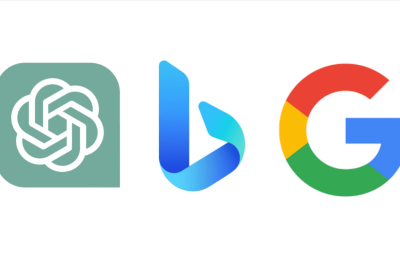The age of the internet has provided us with endless opportunities to reach our target audiences but it can also be overwhelming. Knowing where to focus your marketing efforts in a sea of potential consumers is like looking for a needle in a haystack.
Thankfully, there’s web crawler technology that can do the tough work and save you time by peeking into all nooks and crannies of the web on your behalf so you don’t have to go searching yourselves!
In this blog post, we will explore what is web crawling and how using such tech can help marketers better target their intended audience before hopping onto any ad campaigns or other efforts.
What is Web Crawling and How Does It Work in Digital Marketing
Web crawling, in the world of digital marketing, refers to the process of systematically collecting data from websites. These tools use algorithms to navigate through numerous pages and extract relevant information such as keywords and metadata.
As a result, web crawl helps identify trends and patterns across the internet, which can help businesses develop more effective marketing strategies. Web crawlers are also utilized to analyze competitor websites, monitor content updates, and assess website performance.
Overall, web crawling has become an essential tool in the digital marketing industry, providing valuable insights that can inform decision-making processes.
Benefits of Web Crawling for Businesses
Web crawling has become a popular tool for businesses looking to gain competitive advantages in today’s digital age. Essentially, web crawling refers to the automated process of extracting data from websites, and then organizing and storing that data in a database for use later on.
Web crawlers are the software programs used to perform this task, and they work by scanning the internet for relevant information across websites and web pages.
The benefits of website crawling for businesses are many and varied, from improved market research to enhanced customer insights and improved search engine optimization (SEO).
By gathering data and analyzing trends from across the web, businesses can gain a deeper understanding of their market and their customers and use this information to drive decision-making and strategy formulation.
As such, web crawl has become an invaluable asset for businesses looking to stay ahead in the digital age.
A Step-by-Step Guide on How To Use Web Crawling Effectively
For businesses looking to gain a competitive edge in today’s digital age, web crawling has become an essential tool for gathering valuable insights from large amounts of online data.
However, to truly maximize the potential of web crawl, it is important to have a clear understanding of how to use it effectively.
The process begins by defining your goals and determining the types of data you wish to gather. From there, selecting the right web crawler and configuring it to your specific needs is crucial.
Once the search crawler has harvested the desired data, it must be processed and analyzed to uncover meaningful insights. With a thoughtful approach and attention to detail, web crawling can be an incredibly powerful tool for businesses to gain a competitive advantage.
Different Types of Web Crawlers & Their Applications
Web crawlers, also known as spiders or bots, are computer programs designed to systematically scan the internet and collect data from websites. A search crawler comes in different shapes and sizes, with varying levels of complexity and features.
The most common types of web crawlers are focused crawlers, which are designed to collect specific types of content or data from a targeted set of websites, and general crawlers, which aim to collect as much information as possible from a broad range of web pages.
Other types of crawlers include incremental crawlers, which only collect new or updated content, and deep web crawlers, which can access hidden or protected information that is not accessible through standard internet searches.
Web crawlers have a wide range of applications, from search engine indexing and data mining to web accessibility testing and internet research.
Tips To Avoid Common Pitfalls While Crawling the Web
As the world becomes increasingly digitized, the importance of website crawling cannot be overstated. However, the practice can be fraught with pitfalls. To avoid these, there are several tips to keep in mind.
First and foremost, it is essential to tread lightly and be respectful of the websites being crawled. Best practices dictate that you should respect the website’s robots.txt file, which indicates which pages should and should not be crawled.
In addition, it’s important to be mindful of privacy concerns and to make every effort not to store or distribute personal data obtained during the crawling process.
Lastly, make sure to use appropriate proxies to avoid being mistaken for a distributed denial-of-service (DDoS) attack. With these tips in mind, you can master the art of website crawling without running afoul of any common pitfalls.
The Future of Data Gathering Through Web Crawlers
As technology advances, so does the way we gather data. Web crawlers have been around for decades, but their use and capabilities have grown exponentially in recent years.
Used for tasks such as web indexing, search engine optimization, and data mining, search crawlers are an essential tool for collecting vast amounts of information from the internet.
With the increasing popularity of machine learning and artificial intelligence, the future of data gathering through web crawlers is both promising and significant.
Through advancements in natural language processing and image recognition, web crawlers will be able to extract even more meaningful data, ultimately leading to better insights and decisions.
As we continue to rely on the internet for information, the importance of website crawling technology in data gathering cannot be overstated.
Ultimately, web crawling is an invaluable tool in digital marketing and data gathering. It provides businesses with easy access to a wide range of valuable data, and it can be used efficiently if the different types of crawlers are understood and exploited.
Identifying what is web crawling, following the steps outlined in this blog post, and avoiding common pitfalls will make sure businesses can enjoy the benefits of web crawling.
In addition, its time-saving potential means companies can save on labor costs while still obtaining accurate data that they need to make informed decisions.
The potential applications of crawlers are growing each day as technology advances, so it is essential to keep up with new trends and stay ahead of the competition.
Web crawl will remain an essential component of business operations in years to come, so companies should prepare now to truly unlock their potential.









